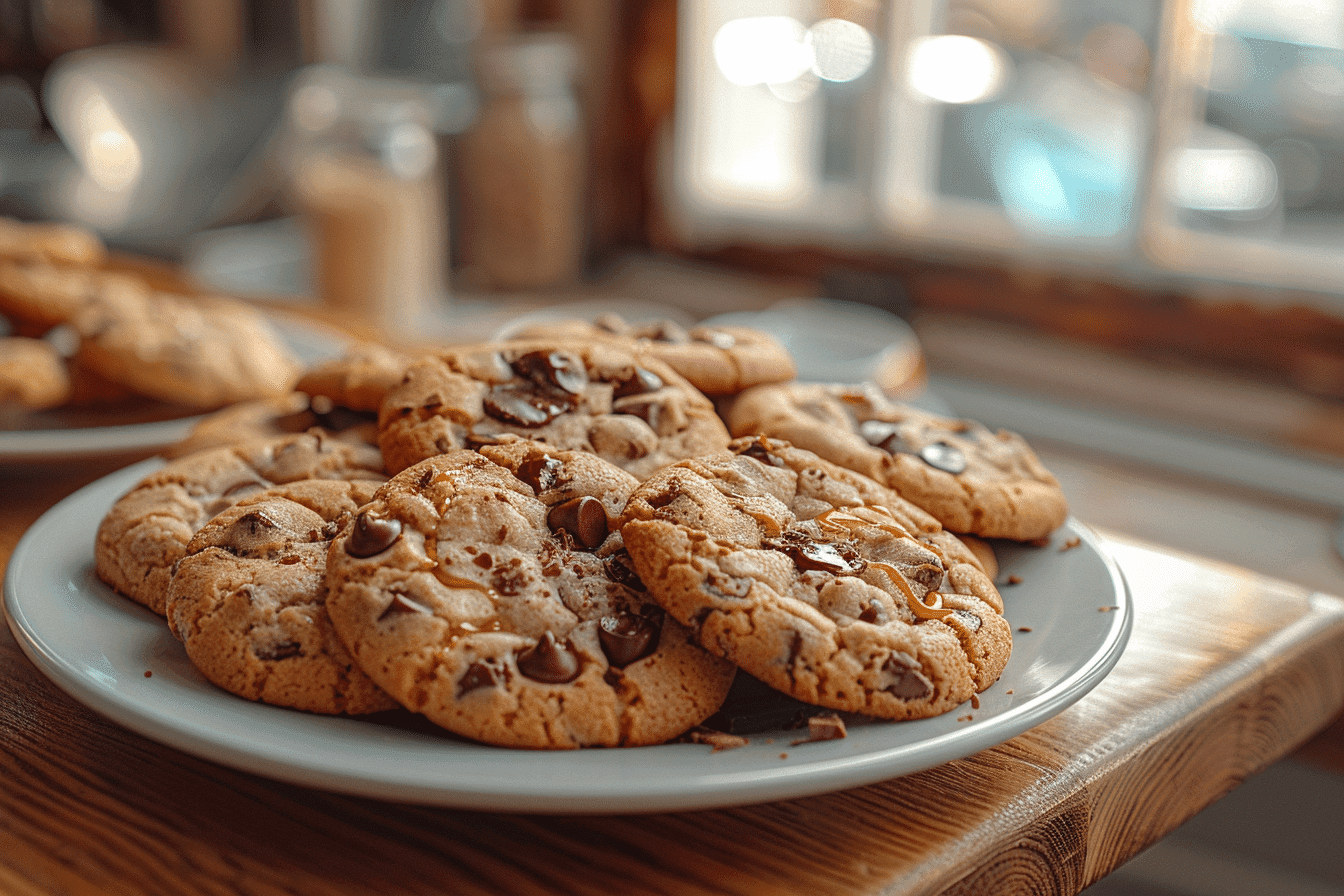Creating the perfect croissant dough is an art that combines skill, patience, and precision. This dough, known for its flaky, buttery layers, forms the basis of one of the most iconic pastries in the world—the croissant. Whether you’re an aspiring baker or an experienced pastry chef, mastering croissant dough can elevate your baking repertoire to new heights. In this comprehensive guide, we will delve into every aspect of making croissant dough, from its history and science to advanced techniques and troubleshooting tips. By the end of this article, you’ll have all the knowledge you need to create bakery-quality croissants at home.
The Rich History of Croissant Dough
The history of the croissant is as rich and layered as the pastry itself. While it is now synonymous with French cuisine, the origins of the croissant are believed to be rooted in Austria. The croissant was inspired by the Austrian kipferl, a crescent-shaped bread, and was brought to France by Austrian bakers in the late 19th century. French bakers refined the recipe, introducing laminated dough—a technique that involves folding butter into dough to create layers—resulting in the flaky, airy croissant we know today.
Understanding the origins of croissant dough adds depth to the craft of baking. The process of lamination, which is key to creating those delicate layers, is what sets croissant dough apart from other types of dough. For those interested in exploring the technical aspects of this process, this comprehensive guide on lamination from King Arthur Baking provides a deep dive into the techniques used by professional bakers.
The Science Behind Perfect Croissant Dough
To achieve the perfect croissant dough, it’s essential to understand the science behind it. The dough is made up of a few key ingredients—flour, butter, yeast, sugar, and salt—each playing a critical role in the final product.
1. Flour
The type of flour you use can significantly impact the texture of your croissant. High-protein bread flour is ideal because it provides the necessary gluten structure to support the many layers of dough and butter. This structure is crucial for the dough’s ability to rise and create the characteristic flaky texture.
2. Butter
Butter is the star ingredient in croissant dough. The quality of the butter directly affects the taste and texture of the final product. For best results, use European-style butter with a higher fat content (around 82%). This type of butter has less water and more fat, which helps create those rich, buttery layers. If you’re curious about the difference between various types of butter and how they impact your baking, this article on choosing butter for pastry from Serious Eats is a valuable resource.
3. Yeast
Yeast is responsible for the fermentation process, which gives the dough its rise. Active dry yeast is commonly used in croissant dough, but fresh yeast can also be used for a more traditional approach. The yeast feeds on the sugar in the dough, producing carbon dioxide and causing the dough to expand.
4. Sugar and Salt
Sugar not only sweetens the dough but also aids in the fermentation process by providing food for the yeast. Salt, on the other hand, enhances the flavor and strengthens the gluten structure, which is essential for the dough’s elasticity and texture.
The Importance of Temperature Control
One of the most critical factors in making croissant dough is temperature control. The butter must stay cold during the lamination process to prevent it from melting and merging with the dough. If the butter melts, the layers will not form correctly, resulting in a dense, less flaky croissant. This is why it’s crucial to work in a cool environment and chill the dough between each fold.
Step-by-Step Guide to Making Croissant Dough
Creating croissant dough from scratch is a multi-step process that requires time and precision. Below is a detailed guide to help you through each stage.
1. Mixing the Dough
- Ingredients:
- 4 cups (500g) bread flour
- 1/4 cup (50g) granulated sugar
- 2 1/4 tsp (7g) active dry yeast
- 1 1/2 tsp (9g) salt
- 1 1/4 cups (300ml) warm water
- 1/4 cup (60g) unsalted butter, softened
Instructions:
- In a large mixing bowl, combine the flour, sugar, yeast, and salt.
- Add the warm water and softened butter, mixing until a dough forms.
- Knead the dough on a floured surface for about 10 minutes, or until it becomes smooth and elastic.
- Place the dough in a lightly greased bowl, cover it with plastic wrap, and let it rest in the refrigerator for at least 1 hour.
2. Preparing the Butter Block
- Ingredients:
- 1 1/4 cups (285g) unsalted butter, cold
Instructions:
- Cut the cold butter into slices and arrange them on a sheet of parchment paper to form a square.
- Cover with another sheet of parchment paper and use a rolling pin to flatten the butter into a thin, even layer.
- Chill the butter block in the refrigerator while the dough rests.
3. Laminating the Dough
Lamination is the process of folding and rolling the dough with the butter block to create multiple layers.
- Roll out the rested dough into a large rectangle, about 1/4 inch thick.
- Place the butter block in the center of the dough and fold the dough over the butter, enclosing it completely.
- Roll the dough out into a long rectangle, then fold it into thirds, like a letter. This is the first fold.
- Chill the dough for 30 minutes, then repeat the rolling and folding process two more times, chilling between each fold.
4. Shaping the Croissants
- After the final fold, roll the dough out into a large rectangle about 1/8 inch thick.
- Cut the dough into triangles, about 3-4 inches wide at the base.
- Starting from the base, roll each triangle towards the tip to form the classic croissant shape.
- Place the shaped croissants on a baking sheet lined with parchment paper.
5. Proofing the Croissants
- Let the croissants proof at room temperature for 1-2 hours, or until they have doubled in size.
- Proofing allows the dough to rise and the layers to develop, giving the croissants their light, airy texture.
6. Baking the Croissants
- Preheat your oven to 400°F (200°C).
- Brush the croissants with an egg wash (1 egg beaten with 1 tbsp of water) to give them a golden, glossy finish.
- Bake the croissants for 15-20 minutes, or until they are golden brown and fully baked.
Common Mistakes and How to Avoid Them
Even the most experienced bakers can encounter issues when making croissant dough. Here are some common mistakes and tips on how to avoid them:
1. Over-proofing or Under-proofing
- Over-proofing can cause the croissants to collapse during baking, while under-proofing can result in dense, doughy croissants. To avoid this, monitor the proofing time and ensure the croissants have doubled in size before baking.
2. Butter Leakage
- Butter leakage during baking is a common issue that can result in greasy croissants with uneven layers. This often happens when the butter is too soft or if the dough was not properly chilled during lamination. To prevent this, make sure the butter is cold but pliable and that the dough is well-chilled between folds.
3. Uneven Layers
- If your croissants don’t have distinct, flaky layers, it could be due to uneven rolling or insufficient folds during lamination. Be sure to roll the dough evenly and complete all the necessary folds.
For additional tips on avoiding these and other common dough-making mistakes, this article on dough-making mistakes from The Kitchn offers practical advice.
Advanced Techniques for Perfecting Croissant Dough
Once you’ve mastered the basics of croissant dough, you can experiment with advanced techniques to enhance flavor and texture.
1. Using Preferments
- A preferment, such as poolish or biga, is a mixture of flour, water, and yeast that is allowed to ferment before being added to the final dough. Using a preferment can add depth of flavor and improve the texture of your croissants.
2. Experimenting with Butter Types
- Try using cultured or European-style butter with a higher fat content. These butters can create a richer, more flavorful croissant with an even flakier texture.
3. Adjusting Hydration Levels
- The water content in your dough can affect the final texture. For a softer, more tender croissant, you can increase the hydration level by adding more water. For a sturdier, more structured croissant, reduce the water content slightly.
4. Incorporating Flavors and Fillings
- Once you’re comfortable with the basic croissant dough recipe, you can start experimenting with different flavors and fillings. Add chocolate, almond paste, or even savory ingredients like cheese and herbs to create unique variations of the classic croissant.
Storing and Freezing Croissant Dough
Proper storage is essential to maintaining the quality of your croissant dough, especially if you’re not planning to bake it immediately.
1. Refrigeration
- If you plan to use the dough within 24 hours, you can store it in the refrigerator. Wrap the dough tightly in plastic wrap to prevent it from drying out.
2. Freezing
- Croissant dough can be frozen for up to two months. To freeze, shape the croissants and place them on a baking sheet. Freeze them until solid, then transfer them to an airtight container. When you’re ready to bake, thaw the croissants overnight in the refrigerator, proof, and bake as usual.
Creative Variations and Recipes Using Croissant Dough
Croissant dough is incredibly versatile and can be used in a variety of sweet and savory recipes. Here are a few creative ideas:
1. Pain au Chocolat
- This classic French pastry is made by wrapping croissant dough around a bar of dark chocolate. The result is a rich, chocolate-filled treat with a flaky, buttery crust.
2. Almond Croissants
- Transform day-old croissants into almond croissants by filling them with almond cream and topping them with sliced almonds before baking.
3. Croissant Breakfast Sandwiches
- Use your homemade croissants to create gourmet breakfast sandwiches. Fill them with scrambled eggs, cheese, and your choice of meat or veggies for a delicious and satisfying meal.
FAQs About Croissant Dough
1. What is the best flour to use for croissant dough?
High-protein bread flour is recommended as it provides the necessary gluten structure for the dough’s layers.
2. How long should I proof croissant dough?
Proofing time can vary, but typically it takes about 1-2 hours at room temperature, or until the croissants have doubled in size.
3. Why is my croissant dough not rising?
This could be due to inactive yeast or the dough being too cold. Ensure your yeast is fresh and active, and proof the dough in a warm environment.
4. Can croissant dough be frozen?
Yes, croissant dough can be frozen for up to two months. Shape the croissants before freezing and thaw in the refrigerator before baking.
5. How do I prevent butter from leaking out of the dough?
Make sure the butter and dough are the same consistency during lamination, and keep everything cold to prevent the butter from melting and leaking.
Conclusion
Mastering croissant dough requires patience, precision, and practice, but the results are well worth the effort. By understanding the science behind the dough, following the step-by-step process, and applying advanced techniques, you can create perfect croissants with flaky layers and a rich, buttery flavor. Whether you stick to the classic croissant or experiment with creative variations, the skills you develop will serve as a foundation for a wide range of delicious pastries.

























